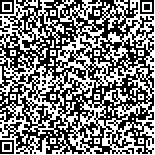下载中心
优秀审稿专家
优秀论文
相关链接
摘要

DDM波形是GNSS-R技术用于反演地球物理参量的基本观测量,其仿真结果的可靠性直接影响GNSS-R的理论研究及项目工程参数设计。利用GREEPS仿真软件分析了时延间隔与多普勒间隔对DDM波形仿真结果可靠性的影响,得到了用于获取可靠DDM仿真波形的时延与多普勒间隔参数。研究表明,时延和多普勒间隔越小,DDM仿真波形与理论波形吻合度越高;当时延间隔取1/16个GPS L1 C/A码元、多普勒间隔取50 Hz时,DDM仿真波形与理论波形几乎完全吻合,二者的相关系数大于0.99;时延间隔对DDM仿真波形峰值位置的影响远大于对峰值信噪比的影响;而多普勒间隔对DDM仿真波形峰值位置与信噪比的影响相当。
Global Navigation Satellite System Reflectometry (GNSS-R) uses GNSS signals reflected by the Earth's surface to detect the Earth surface parameters, including sea surface wind field, sea surface height, soil moisture, sea ice range, and snow depth. GNSS-R is a new Earth remote sensing technology, and it has been a research focus in recent years. Delay-Doppler Mapping (DDM) is a significant GNSS-R observation for retrieving geophysical parameters. The reliability of GNSS-R DDM simulation results directly affects GNSS-R theoretical research and satellite mission engineering parametric design. In this thesis, the effects of delay and Doppler intervals on a simulated DDM is investigated, and the suitable parameters for both intervals is determined to generate a reliable DDM simulation result.
GREEPS, which was a GNSS-R simulator based on Z-V models and was developed by the National Space Science Center of the Chinese Academy of Sciences, is currently used to simulate DDM waveforms with different delay and Doppler intervals. To evaluate the accuracy of the simulated DDM waveforms, the 1D delay mapping with 0 Hz Doppler and the peak's signal-to-noise ratio (SNR) and position of the simulated DDM are compared with theoretical ones.
The results shows that the smaller the delay and Doppler intervals are, the higher the correlation coefficient of the simulated DDM waveform and the theoretical waveform will be. When the delay interval is less than 1/16 GPS L1 C/A code chips, the correlation coefficient of the simulated DDM waveform and the theoretical waveform is greater than 0.99. The relative deviation of the peak SNR of the simulated DDM waveform is approximately 0.1% when the delay interval is set to be 1/16 GPS L1 C/A code chips. However, the relative deviation of the peak position of the simulated DDM waveform is extremely high. Even if the delay interval is set to be 1/64 GPS L1 C/A code chips, the relative deviation of the peak position of the simulated DDM is just 2.3%. When the Doppler interval is less than 200 Hz, the correlation coefficient of the simulated DDM waveform and the theoretical waveform is close to 1. When the Doppler interval is less than 50 Hz, the relative deviation of the peak SNR and the peak position is less than 0.1%.
It is can be concluded that the smaller the delay and Doppler intervals are, the higher the coincidence degree of the simulated DDM and the theoretical DDM will be. When the delay interval and the Doppler interval are set to be 1/16 GPS L1 C/A code chips and 50 Hz, respectively, the simulated waveforms and the theoretical waveforms highly coincide with one another. The correlation coefficient is more than 0.99, and the relative deviation of the peak SNR of DDM is less than 0.1%. The effect of the delay interval on the peak's position of DDM is greater than that of the Doppler interval. The relative deviation of the position of the peak SNR is greater than 2% even if the delay interval is set to 1/64 GPS L1 C/A code chips.

